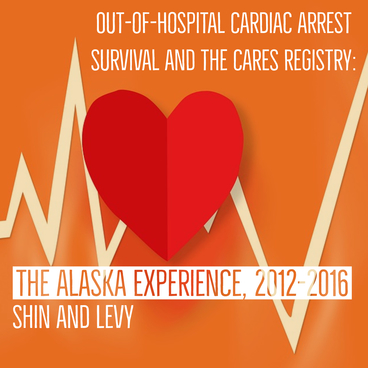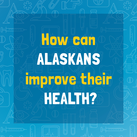Dear Alaska EMS Provider,
I would like to congratulate our Governor’s EMS Award winners and nominees that are listed later in the newsletter. Your dedication to the people of Alaska and the EMS system is recognized and greatly appreciated by the State EMS office.
I would like to thank all those who participated in the question and answer forum with Heidi Hedberg and I at the Southern Region symposium. The feedback was very positive and the State EMS office will continue to participate in these forums at all symposiums. I firmly believe in order to move the EMS system forward we need to hear your thoughts and have a free flowing dialogue with our providers and system stakeholders. I look forward to and invite everyone to participate in the forums at the upcoming Interior and Southeast Symposiums.
I would also like to thank all of the regional EMS staff for attending the Performance Measure workshop. The State EMS office and Regional directors worked collaboratively together to develop the state’s first set of performance measures. Alaska is now one of a handful of states that is beginning to use its data in a meaningful way. It was a true testament to what can be accomplished when we move forward together.
This month we have links to both the Department of Health and Social Services Healthy Alaskans 2030 survey and the first Alaska EMS focused Epidemiology Recommendations and Reports (RnR) Bulletin "Out-of-Hospital Cardiac Arrest Survival and the CARES Registry: The Alaska Experience, 2012-2016". The Healthy Alaskans 2030 survey helps shape the next statewide health improvement plan by telling DHSS and ANTHC which health issues are most important to you. The RnR highlights the benefit of participating in the CARES data registry and how it can be a part of the chain of survival that leads to higher survival rates in communities.
The State EMS office wishes everyone have a happy and safe holiday season!
Respectfully,
Todd McDowell, State EMS Office Manager
#AKEMSForwardTogether
If you were forwarded this newsletter and would like to start receiving future EMS Vitals please follow this to subscribe.
Michael Levy M.D., State EMS Medical Director
The Alaska Council on EMS Services (ACEMS) has a subcommittee called the Medical Direction Committee (MDC) comprised of 11 voting members appointed by the State Medical Director. Currently the committee has been updating, revising, and finalizing the Alaska EMS Scope of Practice. Members are chosen to represent EMS regions as well as other facets of EMS practice.
2018 MDC members include:
- Cody Augahl, M.D. (Nome)
- David Cadogan, M.D. (Girdwood EMS and Guardian Flight/ Aeromedical)
- William Cooper, M.D. (Kasilof)
- BJ Coopes, M.D. (Pediatrics)
- John Cullen, M.D. (Valdez)
- Gil Dickie, M.D. (SREMS)
- Joseph Klejka, M.D. (Bethel)
- Danita Koehler, M.D. (ACEMS and Aleutians)
- Maria Mandich, M.D., (Fairbanks)
- Timothy (Quigley) Peterson, M.D. (Juneau, Vice-Chair)
- Paul Perry, MICP (Kenai Peninsula College, non-voting,member at large)
- Erich Scheunemann, MICP (Anchorage, ACEMS, non-voting, member at large).
Governor's EMS Award Winners Announced!
The Alaska Council on Emergency Medical Services would like to congratulate the 2018 Governor's EMS Award Winners and Nominees! Below, find a full list of nominees in each category, with winners signified by an asterisk (*) and boldface.
Consumer/ Citizen
*Daren R Beals
EMS Provider
Levi Doss
*Joe Forness
Daniel Clifford Jensen
Mia Mangione
Brad Randall
Margo Simple
EMS Administrator
*Sue Hecks
Denise Mobeck
Chaundell Piburn
Michael Riley
Gene Wiseman
Longenbaugh Memorial
*Dr. Barbara "BJ" Coopes
EMS Educator of the Year
*Kinzea Jones
Nicole Olson
Melissa Ann Peters Memorial
*Anne Barker
Outstanding Ambulance Service
Anchorage Fire Depart. Communications Center
*INC Emergency Response
Special Awards and Commendations
*Candy Edwards
*Scott McAfee
*Ronny Simmons and Marco Fischer
Please remember that nominations are accepted year-round and are collected for review each year for the annual EMS Symposium Awards Ceremony held in November. All nominations turned in after August 31st will be considered for the following year. To find out more about the Governor's EMS Award categories and how to nominate please visit Alaska EMS Awards here.
Upcoming ACEMS Meeting Information
January 31-February 1, 2019 in Juneau, Alaska
Fatigue in EMS
Fatigue among emergency responders has been trending upwards in recent years. The link below is an info-graphic on Fatigue In EMS from the National Association of State EMS Officials (NASEMSO). This topic should invoke discussion among fire and EMS crews. Keeping providers safe is a top priority within any EMS system, but it starts with you. Refer to such resources such as National Institute for Occupational Safety & Health (NIOSH) and the NASEMSO project on Fatigue in EMS for more information on this and other safety related topics. Make safety part of your culture.
Click here for the Fatigue in EMS info-graphic.
Calling all Pediatric Instructors!
The Alaska Office of EMS is developing a list of pediatric instructors to provide resources and support. If you are a pediatric instructor please email the Alaska EMS for Children Program.
Human Trafficking: The Nightmare Next Door
Tuesday, November 27, 2018; 7:00am (10am CT)
Satellite Conference and Live Webcast
Click to see the Conference flyer here.
Register for this Human Trafficking conference program.
Interior Region EMS Symposium
March 27-30, 2019
Wedgewood Resort in Fairbanks, Alaska
Please visit the Interior Region EMS Council Symposium webpage for more information.
Southeast Region EMS Symposium
April 24-28, 2019
Sitka, Alaska
Please visit the Southeast Region EMS Council Symposium webpage for more information.
Interior Trauma Conference
May 17, 2019
8:00am- 5:00pm
Pikes Waterfront Lodge in Fairbanks, Alaska
One day trauma conference in the heart of Alaska. Whether you are an RN, PA, EMT, Paramedic, Health Aids or any other first responders, you will enjoy and benefit from this education opportunity.
For more information please visit the Alaska Interior Trauma Conference site here.
 Interim Guidance for the Safe Transport of Children
Currently, the US does not have a requirement for the testing or certification of any child transport device that is used in an ambulance. As a result, EMS providers are forced to make transport equipment buying decisions with limited information. To address this problem the National Association of State EMS Officials (NASEMSO) Safe Transport of Children (STC) Committee has assembled a team of experts in vehicle safety and pediatric health to develop a research program to resolve this important safety issue. This team is working with industry partners to develop new Pediatric Transport Standards. In the interim, NASEMSO has released the Safe Transport of Children by EMS: Interim Guidance, March 7, 2018.
|
Current guidance from NASEMSO for immediate actions that can be taken to enhance pediatric safety during ambulance transport include:
- Developing specific policies and procedures that address, at minimum the following elements: methods, training, and equipment to secure children during transport in a way that reduces both forward motion and possible ejection.
- The primary focus should be to secure the torso, and provide support for the head, neck, and spine of the child, as indicated by the patient’s condition.
- Establishing a prohibition on children being transported unrestrained.
- Establishing a policy for securing all equipment during a transport where a child is an occupant of the vehicle, with mounting systems tested in accordance with the requirements of SAE J3043.
- Only using child restraint devices in the position for which they were designed and tested.
- All device(s) (including a combination of devices) should cover a weight range of between five and 99 pounds (2.3 - 45 kg), ideally supporting the safest transport possible for all persons of any age or size.
- Following manufacturer’s recommendations for the weight/size when selecting the appropriate device for the child being transported.
At the completion of the research program the committee expects to publish test standards addressing supine, seated and neonatal pediatric patients. From these test results, partnering manufacturers will supply newly designed or modified products for additional testing.
Alaska EMS for Children does not endorse any product and urges anyone purchasing pediatric transport equipment to request testing information from the vendor/manufacturer before purchasing.
 Complete your renewal now
There is 45 days left to submit Ambulance Service, EMT 1, and ETT Instructor recertification applications. The State EMS Office expects to process over 600 applications before the end of the year. Please allow adequate time for the recertification process.
Please remember Ambulance Services must build their roster within the Certification Portal that includes all members and/or employees of the ambulance service.
- ETTs, Nurses, Physicians, and/or other personnel will need to create an account and fill out the RN/ Paramedic/ Other application and be added to the service roster.
-
Administrative staff, Medical Director, and Pediatric Emergency Care Coordinators (PECC) will also be required to be indicated on the roster. Please contact EMS for Children for questions concerning PECC.
If you have any questions please email the Certification Officer.
 Deadlines
December 31- Ambulance Service and EMT 1 Recertification
March 31- EMT 2, EMT 3, and Instructor Recertification
Login to your account here to re-certify.
|
 Shin, J. and Levy, Mike. “Out-of-Hospital Cardiac Arrest Survival and the CARES Registry: The Alaska Experience, 2012–2016, State of Alaska Epidemiology Bulletin, Vol. 20, No. 6, http://www.epi.alaska.gov/bulletins/docs/rr2018_06.pdf.
CARES RnR
We are pleased to announce the publication of the first Alaska EMS focused Epidemiology Recommendations and Reports (RnR) Bulletin Volume 20, Number 6. This report titled, "Out-of-Hospital Cardiac Arrest Survival and the CARES Registry: The Alaska Experience, 2012-2016", highlights the benefit of participating in the CARES data registry and how it can be a part of the chain of survival that leads to higher survival rates in communities.
Contributions from Jenny Shin, MPH, Pacific Northwest CARES, Emergency Medical Services Division; and Mike Levy, MD, Medical Director, Alaska Section of Rural and Community Health Systems. A must read!!
Read it here: Out-of-Hospital Cardiac Arrest Survival and the CARES Registry: The Alaska Experience, 2012-2016.
Performance Measures
A goal of the State EMS Office is to ensure we provide quality care to our patients. In order to help us reach that goal, the Regional EMS Offices and the State EMS Office met recently to establish state level Performance Measures. With the help of a contracted facilitator, we collectively identified the following “Top 5” list of measures we will begin reporting on:
- Compliance with Reporting into Elite 3.0
- Percentage of Calls that Were Appropriately Staffed (Based on Certification Level)
- Chute Times (Response Delays)
- Protocol Compliance (Quality Patient Care)
- Procedure Success Rate
What Is Performance Measurement?
The Turning Point Guidebook for Performance Measurement provides several definitions of performance measurement including:
- Selection and use of quantitative measures that provide information about critical aspects of activities, including their effect on patients. Measures of what “actually happened” can be compared to goals set by your organization.
- Performance measurement analyzes the success of a work group, program, or organization's efforts by comparing data on what actually happened to what was planned or intended.
- Performance measurement asks, “Is progress being made toward desired goals? Are appropriate activities being undertaken to promote achieving those goals? Are there problem areas that need attention? Successful efforts that can serve as a model for others?”
The focus of performance measurement is less on the individual provider and more on the organization as a whole to evaluate whether an adequate structure and correct processes are in place to achieve the organizational goals (Lichello, 1999).
The Next Steps
Once the data is collected on these performance measures, it will give us a good starting point of how the EMS system in Alaska is performing as a whole. After we establish initial benchmarks, we can then develop ways to improve in the areas where we are not performing well or capitalize on the areas we are doing well. It is important to reinforce that we are looking at the Alaska EMS system from a broad perspective and our goal here is to improve patient care and services delivered throughout the State. As we gather data and compile reports, we will provide this information in a report card type format. More information to come!
Reference
Lichiello, P. (1999). Guidebook for Performance Measurement, Robert Wood Johnson Foundation, University of Washington Turing Point National Program Office, Seattle, WA
Alaska EMS Data Manager Contacts:
Brian Ritchie, State EMS Data Manager
Chaundell Piburn, Southeast Region EMS Council
Kimberlee Johnson, Interior Region EMS Council
Aaron Knowles, Southern Region EMS Council

The Alaska Department of Health and Social Services and the Alaska Native Tribal Health Consortium invite participation in a 10 minute survey on the state health improvement plan, Healthy Alaskans. The mission of Healthy Alaskans is to provide a framework and foster partnerships to optimize health for all Alaskans and their communities.
 Please tell DHSS and ANTHC which health issues are most important to you by taking the Healthy Alaskans online survey. Your answers will help shape the next statewide health improvement plan, Healthy Alaskans 2030 (HA2030). HA2030 will contain the framework health partners across Alaska may follow over the next 10 years to improve the health of all Alaskans.
If you have any questions or comments please email healthyalaskans@alaska.gov.
|
|